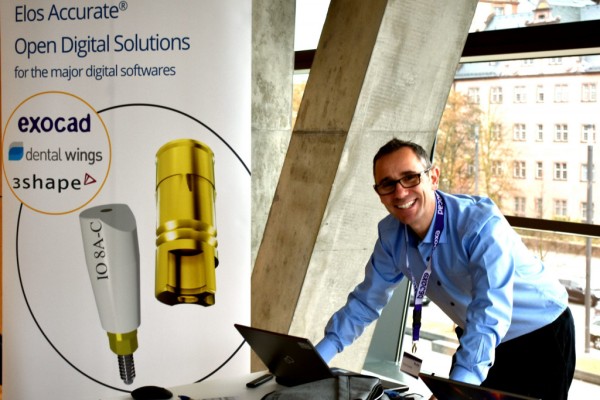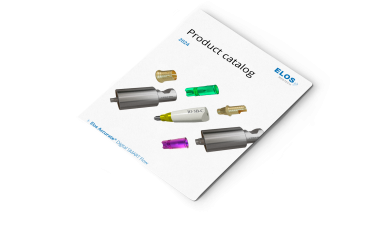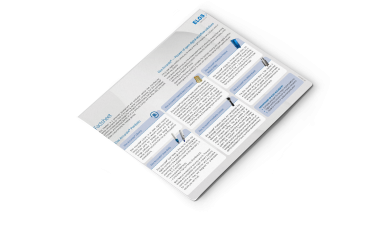Managing Director of Nexus Dental, Steven Campbell RDT, has become somewhat of an advocate for digital dentistry in recent years. He is regularly invited to talk at various dental industry events around the world, where he enthusiastically shares his knowledge and insights about digital dentistry and how it has transformed his own dental laboratory.
In the UK and the US, the dental laboratory industry has been facing a number of major challenges: an aging workforce which isn’t being replenished with enough young technicians to meet market demands, an outdated brand image as a messy, less than glamorous profession and cross-team communication issues, to name just a few. Luckily, however, there appears to be a light at the end of the tunnel. I recently caught up with Steven Campbell RDT to discuss his upcoming talk at the LMT LabDay Chicago event in February, where he told me about his theory that digital dentistry could be the answer to all of those problems.
Hi Steven! We’ve known each other a long time, so I’m familiar with your enthusiasm for digital dentistry. But for the benefit of our readers, tell me about the point at which digital dentistry became such a big part of your life.
I was experimenting with digital dentistry long before it was as mainstream as it is now. And things were a bit hairy, to be honest, because we were using various bits of software and trying to figure a lot of it out for ourselves.
But in 2015 I opened the first Nexus Dental laboratory, a completely digital dental laboratory, in North Yorkshire in the UK. Our capacity quickly surpassed and then vastly exceeded some of the much bigger labs around us. Mainly because we had begun eliminating so much just dead time.
What do you mean by dead time and why was that so important?
By dead time I mean unproductive time or wasted time. If you think about it, time is precious for all of us these days. Mainly because people are pretty much available 24/7, with schedules that are often planned to precision with minimal room for last-minute changes. But on top of that, lab time is incredibly precious. Because, in the UK and the US at least, there’s a real shortage of skilled technicians so you really have to make the most of their time. You can’t have dental technicians wasting time on something you know isn’t accurate or stable or isn’t going to produce a good result.
Tell me about the challenges that dental laboratories in the UK and the US are facing right now.
Both countries have a lot of the same issues on the horizon. We’re at a critical point with regard to the aging population of technician professionals. Many dental technicians in the US and the UK are going to be way overdue for retirement within the next five years. Which is very bad news.
There are two main reasons, in my opinion, why the younger generations haven’t been choosing a career in dental laboratory work. One of those is the massive shift towards outsourcing dental laboratory work in recent years. It’s a major trend that emerged as a result of cheap labor in countries like China, and one which seriously affected career prospects for young adults looking to become dental technicians. Instead, most of these potential technicians opted to study other subjects that would give them a more secure professional future.
The second reason, I believe, is simply because traditional dental technology just wasn’t a great job. It was messy, it was dirty and it was very hands-on labor-intensive work. Plus, it wasn’t very well paid. It wasn’t an attractive career path at all.
How bad is it getting and what can digital dentistry do to help restore balance within the dental laboratory industry?
The number of people able to carry out dental laboratory work is declining in the UK and the US. However, there’s a 5.8% global increase (CAGR 2017-2022) in the demand for dental laboratory services! The global market for dental laboratory services, purely laboratory services and not dentistry, is due to grow to about $43 billion by 2022. That’s a lot! That’s up from $32.5 billion in 2017. In other words, we’ve got a rapidly declining number of technicians serving a rapidly growing market. Which makes things even worse.
Investment analysts have in fact been predicting a shortage of skilled technicians to fulfil the rising demand, and have therefore been advising people against investing in the dental laboratory industry for that very reason.
The good news, however, is that digital technology really could be the answer. Because, no exaggeration, I believe we will be able to produce four times the amount of laboratory work compared to analog, at exactly the same quality. I’d even argue that digital dentistry is of a higher consistency than we were able to achieve in analog.
You once told me that you value Elos Accurate above all other digital dentistry solutions. Why is that?
At Nexus, we all think Elos Accurate is excellent. Because it’s an open platform, it’s well supported and their scan body is incredibly accurate. But crucially for us, the lab analogsthey make are extremely accurate.
In fact, it’s got to the point now where I would rather buy and supply my clients with an Elos Accurate Scan Body, because that way I would know I’d be carrying out the rest of the workload using Elos Accurate components.
You say digital dentistry is helping laboratories meet the growing market demand. But how will it help the dwindling population of skilled dental technicians?
It’s very hard to find skilled technicians, but the job and the industry are changing fast. When I started out, I used to sit with a Bunsen burner and a wax knife, and wax up crowns. Honestly, it was not attractive and it was very mundane. I was okay because I enjoyed it and found it relaxing, but it’s not what people want to be doing now. It’s not particularly glamorous, not at all.
If you look at laboratories now though, you walk into these design suites and ceramics studios, and they’re really professional environments to work in. Take the Ashley Byrnes laboratory, for example. It’s gorgeous and it’s absolutely cutting-edge design. So whenever we begin the recruitment process for a new technician at Nexus Dental, we talk about cutting-edge technology and let them know they’re about to experience something glamorous and exciting. And we’ve filled positions almost instantaneously. Whereas positions at other labs that were simply advertised as a dental technician position went unfilled for months.

Cutting-edge design is more common in laboratories these days. Above: Ashley Byrnes Dental.
How is digital dentistry helping surgeons, dentists and dental practices streamline and improve the quality of work?
In the past, it was very hard to discuss complex cases by phone and email. Whereas now, everything is in a 3D visual format that you can move and rotate. So rather than trying to explain something over the phone, I can now send a full 3D rendering of it, which the surgeon can then look at in their own time. So the main advantage of digital dentistry for a dental team is that it allows us to communicate much more effectively. And if you communicate better, there will be fewer remakes, errors and misunderstandings. It’s all about making better, more consistently high quality restorations.
It’s also a much less intrusive way of communicating with the rest of your dental team. In the past, a technician would call a surgeon, probably dragging them out of surgery, try to explain the problem in the first two minutes and then bombard them with questions. Which they’re then expected to answer on the spot. Whereas with digital dentistry, we just create a 3D capture package, email it to them and ask them to have a look at it when they get the chance. It’s a much more convenient workflow and far less intrusive on their time and their thought processes.
It really does sound like digital dentistry is going to solve a lot of the dental industry’s challenges! Thanks for your time, Steven, and I wish you the best of luck at LMT LabDay Chicago. I’ll see you there!
I hope you enjoyed this article and have been inspired by Steven Campbell and his view of digital dentistry. And if you want to know more, why not visit our stand at LMT LabDay in Chicago. I will be there between February 20 and 22 to answer any questions. And if you get the chance, don’t miss Steven Campbell’s seminar. I’m guessing it’s going to be a popular one!
In the meantime, visit our website for more information about Elos Accurate and Elos Accurate Analogs. If you enjoyed my article, I can warmly recommend these other articles on our dental blog: Simplified digital workflow with Elos Accurate Hybrid Base, Use Elos Accurate® Analog, New dental distributor of Elos Accurate in the US.



